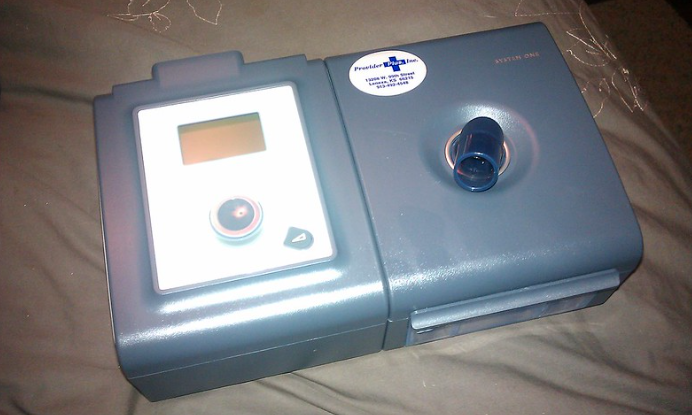

You've most likely heard of obstructive sleep apnea (OSA) and CPAP therapy. Your relative or acquaintance may have been treating obstructive sleep apnea and have discussed their CPAP experience. But just what is a sleep apnea machine? What is CPAP? And does it significantly improve sleep quality?
Continuous Positive Airway Pressure is abbreviated as CPAP. CPAP therapy has been available for 30 years and is regarded as the "gold standard" for treating sleep apnea, OSA and other sleep disorders. It refers to the compressed air that is provided by a one-of-a-kind delivery system that includes a mask.
Individuals with sleep apnea are prescribed systematic air pressure settings (by a sleep doctor as well as the specific machine and equipment used for the prescribed pressure and delivered based on your sleep tests.
The best CPAP machine ever is essentially a tiny box with an internally powered fan. Its fan pulls air from the room quietly, softly pressurizes it, and then delivers it at a setting customised to your needs.
A CPAP machine's air intake part features a filter to prevent the intake of dust, smoke, or other pollutants in the air. You should change the filter as needed.
Water is heated here to lower pressure and humidify the compressed air before it the pressurized air is supplied.
Warm, moist air calms your nasal and upper airway passageways, reducing swelling and pain that can occur when utilising the therapy. Although humidification is optional, it provides relief to the vast majority of CPAP therapy patients who live in dry areas or wake up with a dry mouth, nasal passages, or throat. The humidification chamber is simple to clean and should last the life of the machine.
A hose links the box-heated humidifier to the nasal mask and is attached to the CPAP machine. This flexible, lightweight tubing is usually heated to prevent any moisture that may accumulate inside it while the humidifier is running. The hose is long enough (about 6 feet) to allow you free movement while sleeping. Hoses can wear out over time and should be replaced as needed.
The only thing left is the CPAP device and mask. It is frequently stated that the efficacy of a CPAP mask and therapy is often determined by how comfortable and well-fitting the mask is. CPAP masks come in a variety of forms and sizes to accommodate a wide range of facial landscapes. Masks deteriorate over time and should be replaced regularly.
CPAP devices are small enough to fit on a normal nightstand. They are relatively simple to clean and, with proper maintenance and care, should last a long time.
Individuals with sleep disorders have difficulty falling asleep and keeping their airways open while sleeping. Most commonly, the soft tissue in the throat and oral cavity relaxes and/or collapses, closing off or space required for air to move through the nose and into the lungs. This causes breathing pauses that can occur frequently and for long enough to deprive the bloodstream of the oxygen required to deliver to all organs. A bad night's sleep causes daytime sleepiness.
When the brain detects a decline in blood oxygen levels, it induces sleep-disordered breathing and awakening.
If this interrupted breathing pattern and sleep disorder are not corrected, it can lead to long-term health concerns for the individual.
CPAP was developed to assist in preventing these pauses and severe sleep apnea. CPAP machine works to distribute a stream of pressured air as a form of "pneumatic splint" through the tubing and mask to assist in preventing the collapses that are characteristic of obstructive or central sleep apnea. The pressured air assists in keeping the airway firm and open, allowing the user to breathe easily and without impediments and gives you a restful night's sleep.
When some patients begin CPAP therapy, they almost immediately notice the relief of sleeping all night without waking up. Others may take longer to adjust, which is more common.
One thing stays constant for both sorts of users: the more they use it, the easier it becomes to use, and over time, they find it a welcome luxury to use a nasal pillow mask and their CPAP machine, as it restores the good nights' sleep they had been missing for years.
Sleep apnea patients may benefit from using a CPAP machine, as advised by a sleep specialist, while sleeping since it provides consistent airflow and keeps the airways open.
CPAP devices require a prescription and are frequently built with quiet motors and lightweight materials, allowing them to be utilised while travelling.
Most of these gadgets do not include a face mask either, so you must purchase one separately and experience the best sleep quality.
Leave a comment